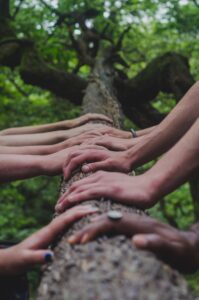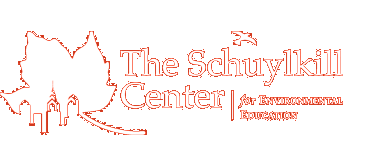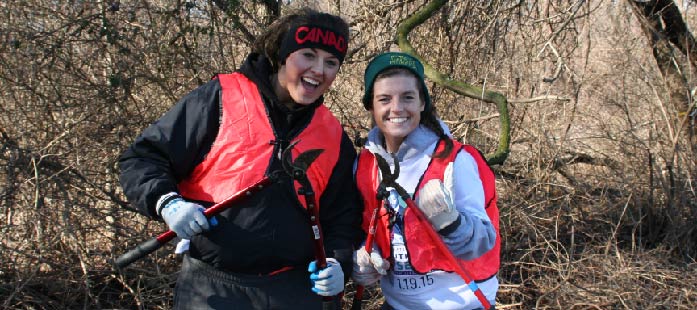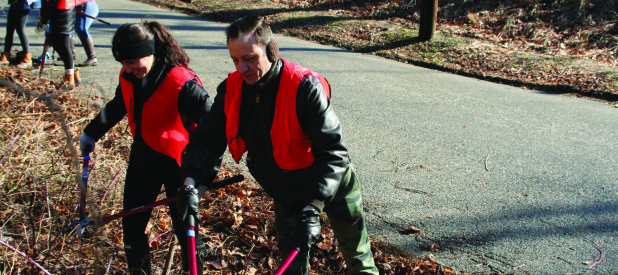
Many hands make restoration possible. Join our Restoration Work Day.
We have named 2022 as our Year of Restoration, dedicating our programming to restoring so many things, starting with the forest habitat that our nature center calls home. But we are also looking to restore our climate, the planet in total, and several things lost in pandemic confusion: our sense of awe and a balance in our relationships with nature and each other.
The 11th annual Richard L. James Lecture, named for our founding director, will be held virtually in March and will focus on restoring the majestic American chestnut tree– slammed by a novel fungal blight in the early 1900s– to Pennsylvania forests, and will feature The American Chestnut Foundation‘s Director of Restoration.
Our beloved Pine Grove, a massing of mature white pines we planted in the 1970s and mightily whacked by a 2020 derecho—a climate-fueled high-energy straight-line windstorm—will benefit from the year: the piles of tree trunks left in the wind’s aftermath will become raw material for the Environmental Art department to invite area sculptors, woodworkers, and others to create inspired sculptures that we share with you.
In the spring, look for a series of Restoration Stations to pop up across the property. These are outdoor exhibits where you can stop and interactively learn something new about a different feature of restoration: native plant species, native bees and other pollinators, monarch butterflies, amphibians, migratory birds, ash trees, box turtles… Which will they be? Come see!
We’ll unveil the first Restoration Stations at Naturepalooza, our annual Earth Day festival, which this year becomes a Celebration of Restoration. Both the spring and fall semesters of Thursday Night Live, our popular online conversations, will skew heavily in this direction— look for the new semester in March and April.
The Center will focus our 2022 habitat restoration efforts along the Wildflower Loop, the deer exclosure area begun circa 2000 that requires constant TLC: new and better fencing, more native plantings, a degraded meadow and pond to restore, and more. We’ll also build a monarch way station on our site, one formally certified by Monarch Watch, and replace a series of bluebird boxes that provide nesting sites for more than bluebirds—tree swallows and small mammals like them too.
“The Wildlife Clinic’s work is by nature restorative,” offers clinic director Chris Strub, “restoring wildlife to their natural habitats and restoring the public’s connection with wildlife through direct rescue efforts.” On top of this, we will work with volunteers and staff to install a Wildlife Garden inside one of its old outdoor cages, using the cage to protect the plants from deer, rabbits, woodchucks, and more. “We’ll grow native plants that make the food wildlife eat,” (think berries and nuts) says Chris, “as well as domestic plants for our patients, like lettuce.”
The clinic will also continue its partnership with Audubon chapters and the Bird Safe Philly, as our clinic is the official drop-off site for migratory birds found stunned when they hit Center City skyscrapers, and we will focus your attention on this important program this year too.
Our next two art exhibitions, the current one by Black artist Makeba Rainey and Filipino-American artist Maria Dumlao, will feature numerous installations and events focusing on the restorative powers of nature, especially for communities of color.
Our Nature Preschool already raises mealworms to feed to the clinic’s bird patients, and will continue this practice, while growing trees from seeds to plant in our forest and collecting acorns and nuts to bring to the clinic. They’ll even assist us in many of the projects noted above.
We’ll end the year in another now longstanding tradition, presenting a restoration-flavored Henry Meigs Environmental Leadership Award to… ah, we’ll be asking you for nominees in the spring.
You can join in the fun: our monthly Restoration Work Groups for volunteers will have a special urgency in 2022. And restore homes for wildlife by putting up bird boxes, planting native wildflowers and trees, and so much more. Hope you’ll join us in a Year of Restoration.
This week in climate. The numbers are finally in: 2021 was tied for the 6th hottest year ever, according to NASA and other agencies. And all of the top seven hottest years have happened in the last seven. (A European report differs slightly, saying 2021 was the fifth warmest.) But July was the hottest month ever recorded by humanity on this planet.
And a different government study reported last week that 2021 was the deadliest weather year for the lower 48 states since 2011, with almost 700 people dying in 20 different billion-dollar weather disasters that together cost almost $150 billion. Climate change, as we are learning, is both costly and deadly.




